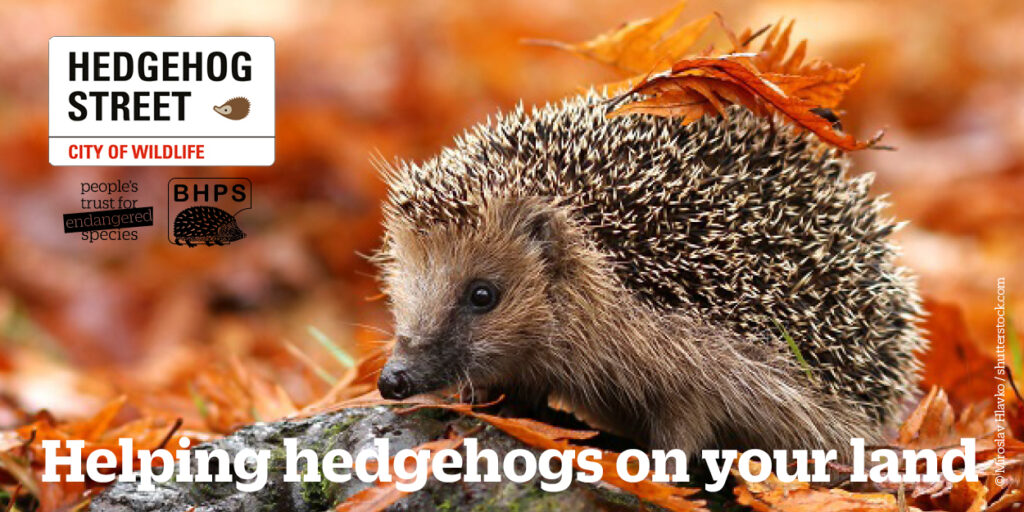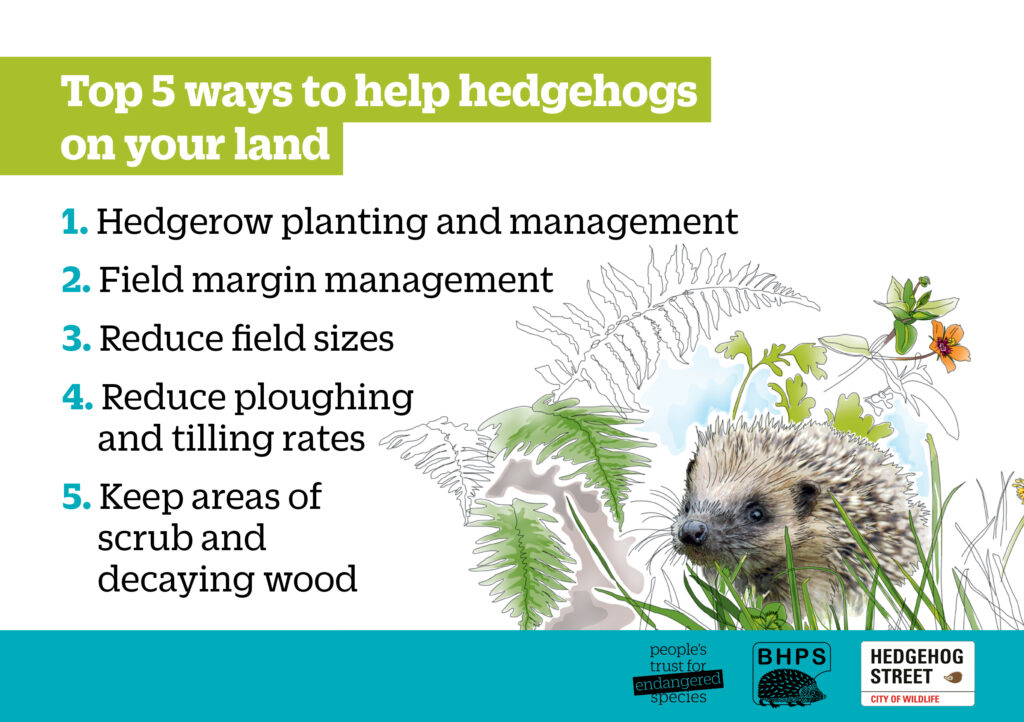How to help rural hedgehogs: free guide for farmers

Surveys have shown that hedgehog numbers in rural areas have plummeted by half since the millennium.
We have produced a FREE guide for the wider farming community and landowners about how we can help hedgehogs and other wildlife to thrive once again in the countryside.
We outline different ways that land can be more hedgehog-friendly, without compromising day-to-day work, including advice on:
- hedgerow management
- field margins and field sizes
- ploughing regimes
- and the usefulness of scrub areas
We also explain how some Countryside Stewardship schemes can help hedgehogs and other desirable wildlife, and provide instructions on how to survey for hedgehogs on your land.
Reasons for hedgehog decline
The reasons for hedgehog decline are complex. The main contributing factors relate to the amount and quality of habitat available in the rural landscape. Hedgehogs, like other creatures, rely on hedgerows and field margins to forage for food and make nests. With less of both, and with many hedges in poor condition, hedgehogs have fewer safe places to roam. Busy roads and more badgers (the main natural predators of hedgehogs) are also factors in areas where hedgehogs have fewer safe places to take refuge, as there is less invertebrate prey for them to feed on.
How you can help
We know there are many farmers across the UK already doing fantastic work by farming their land in a sensitive manner in a bid to help hedgehogs, but we really need to engage with more farmers if we’re to make a difference to rural hedgehog numbers. We hope this guide will provide the advice needed to help hedgehogs and other wildlife in rural areas.
To obtain a FREE copy of this guide, please contact hedgehogs@ptes.org or download a PDF version here.


